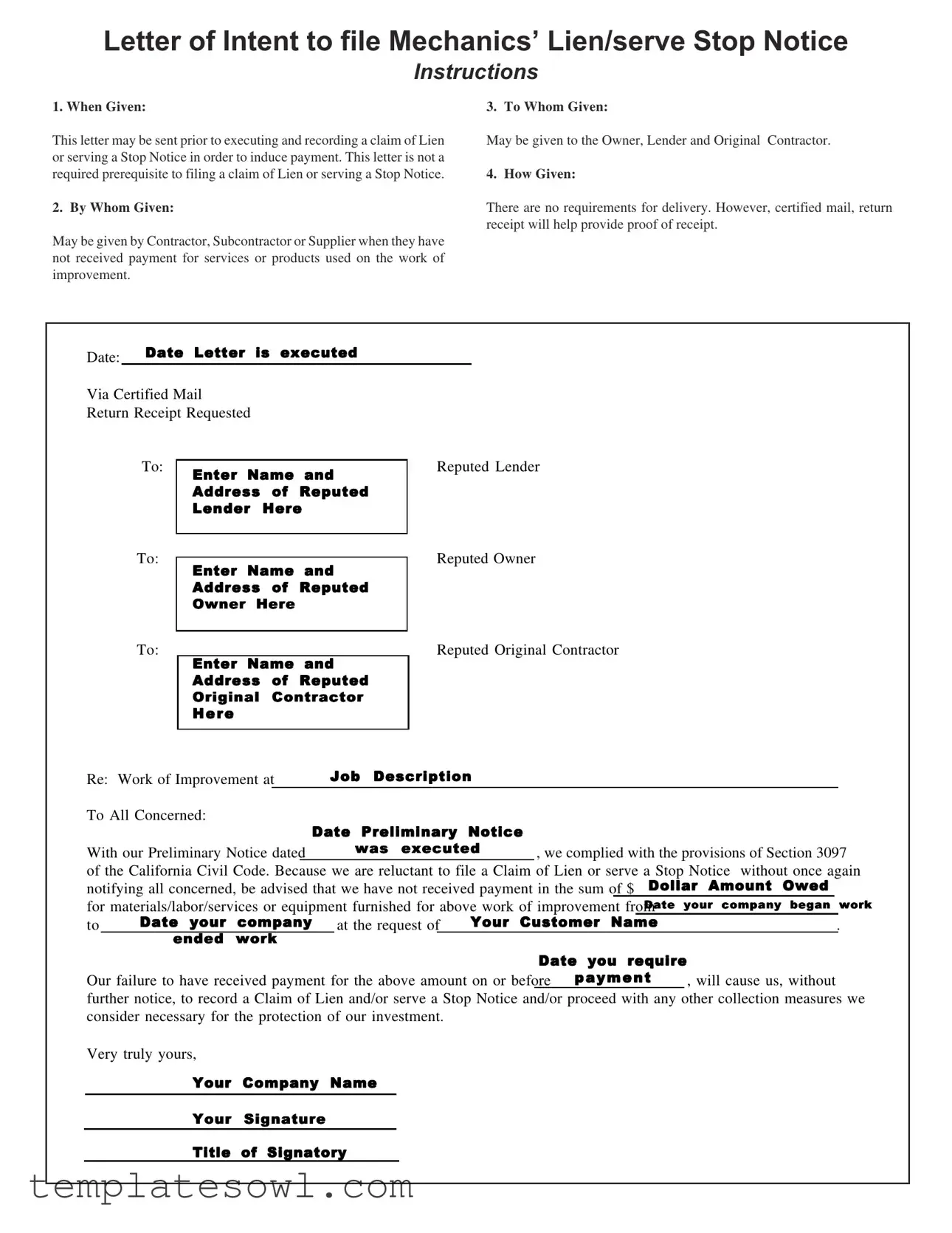What is a Letter of Intent Lien?
A Letter of Intent Lien is a written document that contractors, subcontractors, or suppliers may send when they have not received payment for services or products related to a construction project. It serves as a preliminary notice to the owner, lender, and original contractor, indicating the sender's intention to file a Claim of Lien or serve a Stop Notice if payment is not received. This letter can motivate responsible parties to settle any outstanding debts before further legal action is undertaken.
When should a Letter of Intent Lien be sent?
This letter can be sent prior to filing an official Claim of Lien or serving a Stop Notice. It is often sent when there has been non-payment and a genuine effort to communicate this to all relevant parties is desired. Although it is not legally required to send this letter before taking more formal action, doing so can facilitate negotiations and prompt earlier resolutions.
Who can issue a Letter of Intent Lien?
A Letter of Intent Lien may be issued by a contractor, subcontractor, or supplier. These parties have the right to provide this notice when they have not received payment for labor, materials, or services rendered on a construction project. It aims to uphold their interest in receiving the due compensation for their work.
To whom should the Letter of Intent Lien be addressed?
The letter can be addressed to multiple parties, including the owner of the property, the lender financing the project, and the original contractor responsible for overseeing the work. Properly notifying all relevant parties increases the likelihood of resolving payment disputes amicably.
How should the Letter of Intent Lien be delivered?
While there are no stringent requirements regarding the delivery of the Letter of Intent Lien, sending it via certified mail with return receipt requested is advisable. This method provides tangible proof that the letter was sent and received, which can be crucial in any potential follow-up legal procedures.
What information should be included in the Letter of Intent Lien?
When drafting the letter, it's essential to include specific details: the name and addresses of the parties involved (lender, owner, original contractor), the job description, the amount owed, and the date work began and ended. Clearly outlining these facts helps ensure that all parties understand the purpose of the notice and the seriousness of the situation.
What happens if payment is not made after sending the Letter of Intent Lien?
If payment is not received by the specified date outlined in the letter, the sender may proceed to take further action. This could include recording a Claim of Lien against the property or serving a Stop Notice. These steps can indicate a more aggressive approach in pursuing the owed amount, thereby affirming the sender's commitment to protect their financial interests.
Is sending a Letter of Intent Lien mandatory?
What should one do if they receive a Letter of Intent Lien?
Receiving a Letter of Intent Lien should be taken seriously. It is vital for the recipient to review the details of the letter and take appropriate action. Engaging in communication with the sender is advisable to discuss possible solutions or payment arrangements. Addressing the concerns raised in the letter promptly can prevent the situation from escalating further.


